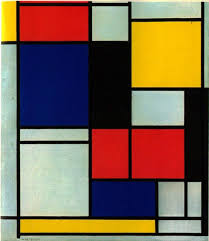I was first introduced to the Golden Mean in an Elements of Design class. My professor, in her French accent, sat at the front of the class and slowly and methodically explained the Golden Mean and how it relates to many things in the world; architecture, art, music, design. It was fascinating to me then and still is today.
The Fibonacci Sequence

1 2 3 5 8 13 21 34 55 89
Every figure is the sum of the two preceding
1 2 + 3 = 5 8 13 + 21 = 34 55 89
O.K. Stay with me here… The Golden Section is devised from this ratio. When a Golden Rectangle is progressively subdivided into smaller and smaller Golden Rectangles, a pattern is obtained. From this, a spiral can be drawn which grows logarithmically, where the radius of the spiral, at any given point, is the length of the corresponding square to a Golden Rectangle.
The given symbol of Phi, which symbolizes the Golden Ratio.
Since then, it’s opened up a lot of doors for me in how I look at design, how I look at architecture and how balance and harmony are present in the world.
Since the Renaissance it has been used extensively in art and architecture, it has been used in historical and important architectures, such as the St. Mark's Basilica and the Parthenon and has become a standard proportion for width in relation to height as used in facades of buildings, in window sizing, in first story to second story proportion, even in the dimensions of paintings and picture frames.
The Parthenon in Athens, Greece.
Ceiling Mosaic in St. Marks Basilica.
A geometrical analysis of the Great Mosque of Kairouan reveals a consistent application of the golden ratio throughout the design.
The Swiss architect Le Corbusier, famous for his contributions to the modern international style, centered his design philosophy on systems of harmony and proportion. Le Corbusier's faith in the mathematical order of the universe was closely bound to the golden ratio and the Fibonacci series.
Le Corbusier’s Villa Savoye, Poissy, France.
Villa Savoye Plan View and the use of the GOLDEN SECTION (1:1.618).
Le Corbusier explicitly used the golden ratio in his Modulor system for the scale of architectural proportion. He saw this system as a continuation of the long tradition of Vitruvius, Leonardo da Vinci's "Vitruvian Man", the work of Leon Battista Alberti, and others who used the proportions of the human body to improve the appearance and function of architecture. In addition to the golden ratio, Le Corbusier based the system on human measurements, Fibonacci numbers, and the double unit.

Le Corbusier’s Modulor System.
Le Corbusier took Leonardo's suggestion of the golden ratio in human proportions to an extreme: he sectioned his model human body's height at the navel with the two sections in golden ratio, then subdivided those sections in golden ratio at the knees and throat; he used these golden ratio proportions in the Modulor system.
Leonardo da Vinci's Vitruvian Man (ca. 1487).
Palladio’s Villa Rotunda.
The Villa Rotonda is symmetrical on all axes, including diagonals. Any architect will tell you this is hard to do, much less sell to a client; even Palladio only did it once, probably just to see if he could. Palladio based his design on simple progressions in the Fibonacci series leading to the Golden Mean. This is also hard to do.

In India, the Golden Mean was used in the construction of the Taj Mahal, which was completed in 1648.
Piet Mondrian used the golden section extensively in his geometrical paintings.
And today, architects are still frequently using the Golden Mean or Ratio in their work…

The CN Tower in Toronto, the tallest tower and freestanding structure in the world, has contains the golden ratio in its design. The ratio of observation deck at 342 meters to the total height of 553.33 is 0.618 or phi, the reciprocal of Phi!

The College of Engineering at the California Polytechnic State University have plans for a new Engineering Plaza based on the Fibonacci numbers.
What can you create using Fibonacci’s Golden Mean?









0 comments:
Post a Comment